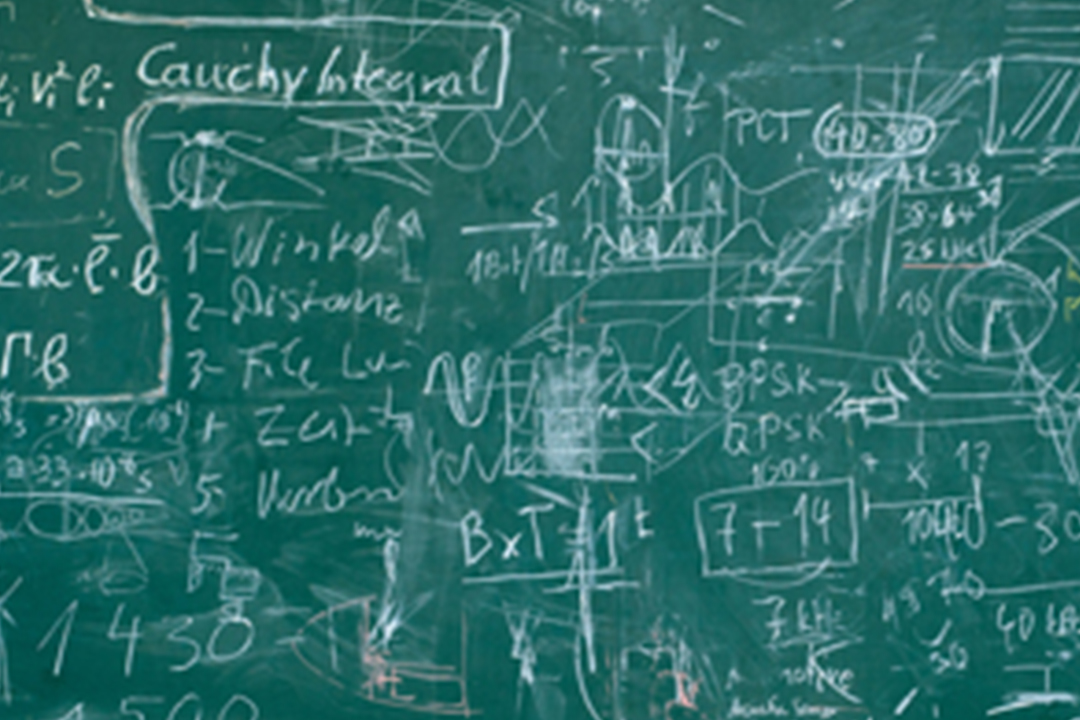For Columbian College sophomore Kendall Moffett-Sklaroff, declaring a math major was a no-brainer. No other subject even comes close to inspiring her passions. “It’s so cool to think about how literally everything in the world works through math,” she beamed. “It’s how planes fly. It’s how buoys float in the ocean. It’s everywhere and everything.”
Around the nation, fewer and fewer college students share Moffett-Sklaroff’s enthusiasm. Less than 40 percent of students who enter school as STEM majors actually wind up earning a degree in science, technology, engineering, or math. Faced with lecture-style mega-classes, overwhelming workloads, and little one-on-one contact with instructors, many potential math majors simply give up. Discouraged and unengaged, they frequently switch majors or drop their math classes altogether.
But Columbian College’s Department of Math is bucking the national trend. Over the past decade, the department has seen an explosive growth in math majors, from about 15 in the early 2000s to 80 this year, according to department Chair Yongwu Rong. While the university’s overall math major population still ranks slightly below the 1% national average, “we are catching up,” Rong added. “Our growth has been very fast and very solid.”
Plugging the Leak
How is the department plugging the leaky STEM pipeline? Rong cites several initiatives that promote teaching excellence, foster greater connections between professors and students, and introduce hands-on research components early in undergraduate studies. “It’s important to include topics that help students see how inherently interesting, as well as useful, math really is,” Rong said.
The department is making headway by emphasizing career-focused courses such as Math Modeling and Computing alongside core classes like Intro to Math Reasoning and Linear Algebra. “The idea is to bridge the gap between theoretical math and courses that show how we actually put math into play,” Rong explained. The curriculum now highlights the myriad of job paths open to math majors beyond academics. From homeland security to stock trading to video game designing, “the job market is filled with well-paying entry level positions for math majors with exceptional critical thinking and analytic skills,” Rong said.
In addition, he points to the new Joint Undergraduate Mathematics and Physics Scholarship (JUMP) program, spearheaded by his department, as a way to engage and retain math students. Bolstered by a five-year, $614,000 grant from the National Science Foundation, JUMP provides scholarship support and cohort research opportunities to talented math and physics students in financial need.
Katherine Willard, a sophomore and one of this year’s 14 JUMP scholars, said her Applied Mathematics major offers options like an actuarial career or a job as a cryptographer for the National Security Agency, the leading employer of math majors. Moffett-Sklaroff is majoring in Computational Math, a combination of computer science and mathematics that she hopes will open the door to becoming an astronaut. “There's no way I could do math theory and proofs on the chalkboard all my life,” she said. “I’d rather go to Mars.”
Overcoming Daunting Challenges
Incoming math students often face daunting challenges, not the least of which is the discovery that their prospective major is extremely hard. “There are a lot of freshmen who were math whizzes in high school but find college math to be very different,” said Willard. “It’s not the calculus and statistics that they used to ace.”
And choosing the right math classes can often be confusing. Without academic guidance, students can have a hard time picking the courses that fit their major requirements and career goals.
A new advising team, led by Professor of Mathematics Joseph Bonin, is removing these obstacles by enhancing communication between teachers and math-minded students. Faculty team-members frequently initiate contact with prospective math majors and invite them to stop by for advising chats even before they declare their major. “We make students feel welcome and we follow through with them throughout their GW careers,” Bonin said. That might include occasional “advising check-up” meetings and emails that may lead to mentoring opportunities. “Personal contact has a profound impact on students,” added Bonin.
Likewise, a new electronic system allows faculty advisors to share information, schedule advising appointments, and identify young people who are struggling before they drop classes or switch majors. The JUMP program also offers intimate seminars that spur student/teacher dialogue. Most recently, the department launched a career mentoring program that connects undergraduate math majors to professionals in their fields of interest.
An influx of international students has also boosted math numbers. About 20% of the current math majors are foreign-born, Rong noted. And the department sponsors ongoing networking and social activities—from weekly coffee chats to a student chapter of the Association for Women in Mathematics—to keep bright STEM students on the math and science track.
In addition, each year the department hosts the Undergraduate Mathematics Conference, a joint effort with George Mason University and the College of William & Mary to spotlight undergraduate research opportunities.
Still, the math major course-load can be trying. Moffett-Sklaroff jokes about designing a bumper sticker that reads: “Sorry, I can’t. I’m a math major.” Willard’s classmates roll their eyes when she reveals she’s studying math. “They assume I’m like freakishly smart or they ask: ‘Why are you doing this to yourself?’”
Beyond the prospect of lucrative careers, math-lovers insist there’s a more profound reason to stick with the challenging major: the joy of math. Like a detective solving a mystery, mathematicians say nothing matches the elation of cracking a complex equation.
“There’s something fascinating and beautiful about seeing the way things fit together,” Moffett-Sklaroff says. “It makes me so happy when all the numbers add up.”


